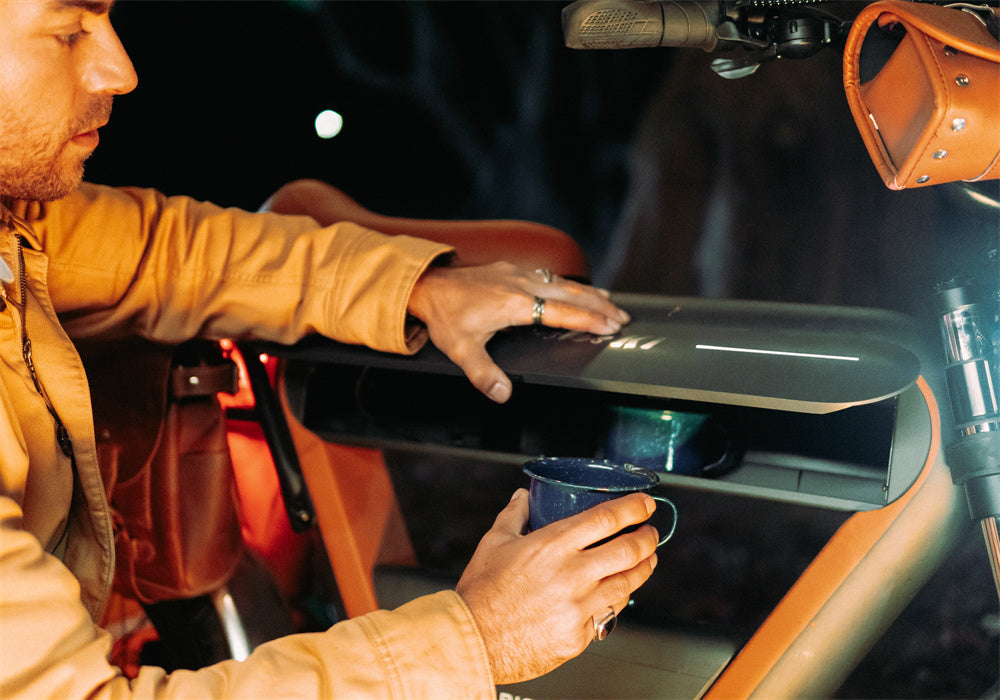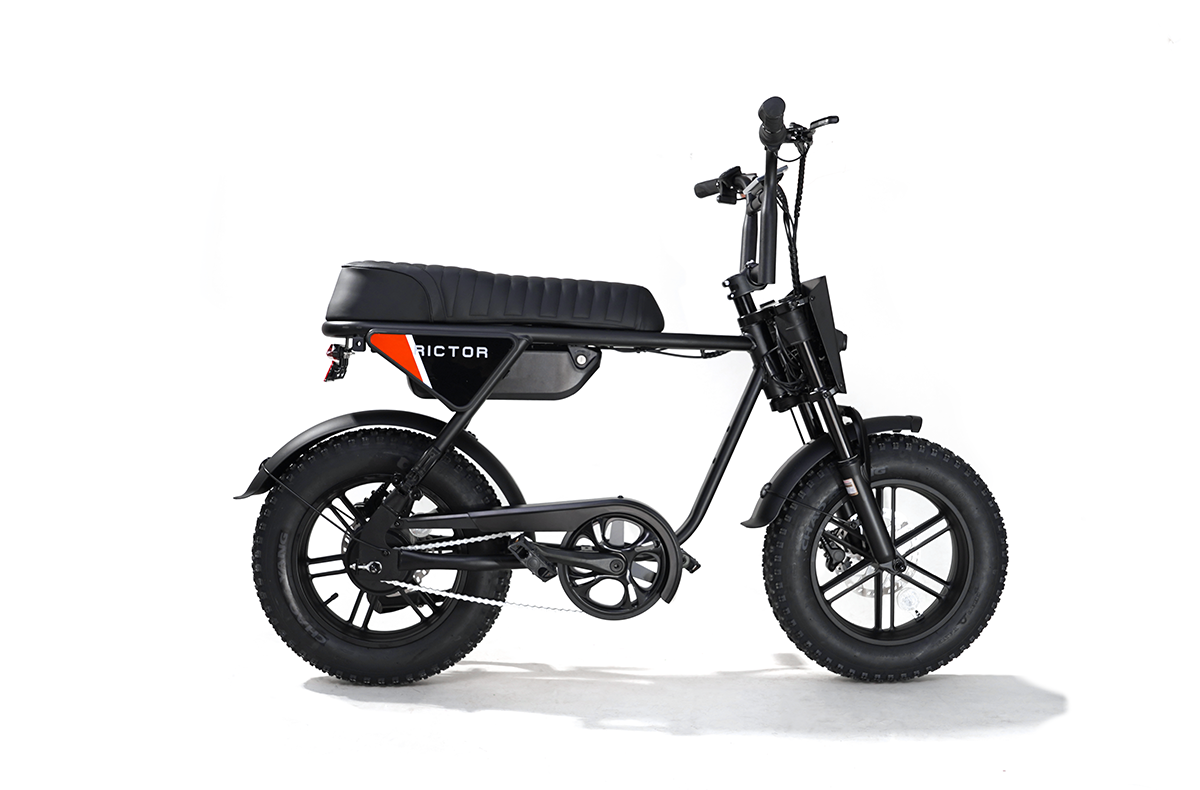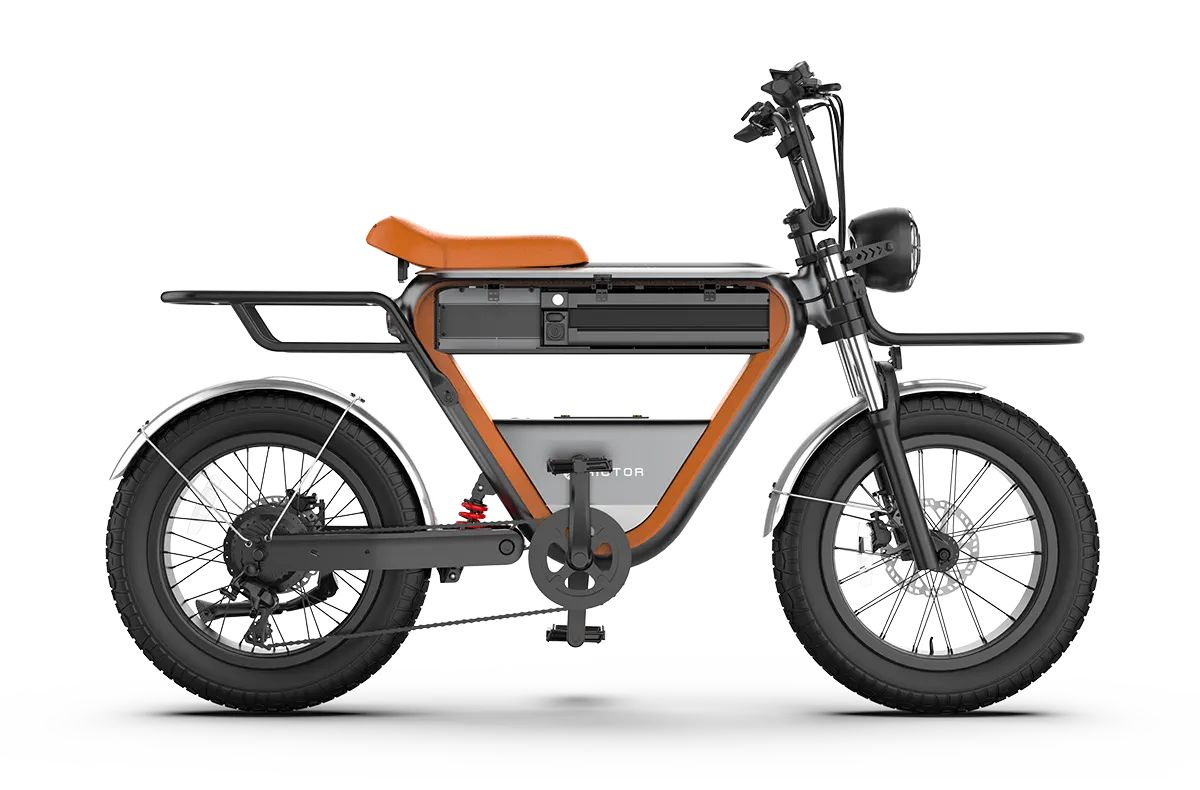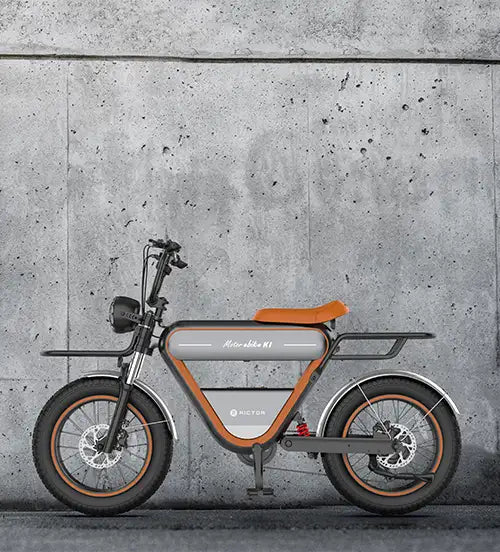
Can You Fast Charge an Electric Bicycle?
Fast charging your e-bike is possible, but it comes with important considerations regarding battery health, charging equipment, and manufacturer specifications.
Electric Bike Battery Charging Basics
Most modern e-bikes use lithium-ion batteries, which have specific charging characteristics. A standard charging process typically takes 3-6 hours for a complete charge cycle. This standard charging rate is designed to optimize battery longevity while providing a full charge. Even charging a long range electric bicycle like the RICTOR K1 takes 4 hours to reach a full charge. The charging time depends on several factors including battery capacity (typically measured in watt-hours or ampere-hours), the charger's output power, and the battery's current state of charge.
When we talk about fast charging an e-bike, we're referring to using a charger with higher amperage output than the stock charger that came with your e-bike. While standard chargers might deliver 2-3 amps, fast chargers can deliver 4-10 amps or more, potentially cutting charging time by 50% or more.
SEE ALSO Can you charge an electric bike with solar panels?
Is Fast Charging Safe for E-bike Batteries
The safety of fast charging depends primarily on whether your e-bike's battery management system (BMS) supports higher charging rates. The BMS is designed to protect the battery by monitoring temperature, voltage, and current during charging and discharging processes.
High quality ebikes often have sophisticated BMS systems that can handle faster charging rates, but there are important limitations to consider. Repeatedly fast charging can generate more heat within the battery cells, which may accelerate capacity degradation over time. This is especially true if the battery doesn't have adequate thermal management.
Fast Charging Options for Electric Bikes
If your e-bike supports fast charging, you have several options:
Manufacturer-approved fast chargers are the safest choice, as they're designed specifically for your e-bike model and its BMS capabilities. These chargers typically cost more but provide the optimal balance between charging speed and battery protection.
Third-party fast chargers may be available at lower prices, but require careful research to ensure compatibility. Look for chargers that match your battery's voltage exactly and offer adjustable current settings. The connector type must also match your e-bike's charging port precisely.
Some premium e-bike models support standardized fast-charging protocols similar to those used in electric vehicles, though this is still relatively uncommon in the e-bike market.
The Impact of Fast Charging on Battery Lifespan
Fast charging inevitably creates more stress on your battery cells compared to standard charging. The primary concerns include:
Heat generation during fast charging can accelerate the chemical degradation processes within lithium-ion cells. Most lithium-ion batteries prefer to operate and charge at moderate temperatures (around 20-25°C or 68-77°F).
Higher charging currents can contribute to faster growth of the solid electrolyte interphase (SEI) layer within cells, which gradually reduces capacity over time.
Research suggests that consistently fast-charging a lithium-ion battery may reduce its total cycle life by 10-20% compared to exclusively using standard charging rates. However, occasional fast charging when needed is unlikely to cause significant harm to a well-designed battery system.
Best Practices for E-bike Charging
To maintain battery health while occasionally benefiting from fast charging when needed:
Use standard charging for routine charging needs, especially overnight charging when time isn't a constraint.
Reserve fast charging for situations when you genuinely need a quick turnaround, such as during a lunch break on a long ride day.
Allow the battery to cool down before fast charging if you've just finished a ride, particularly on hot days or after strenuous uphill sections.
Avoid frequent full discharge-fast charge cycles, as these create the most stress on the battery. Instead, try to keep your battery between 20% and 80% charge for optimal longevity.
Consider using a smart charger that can adjust charging rates based on battery temperature and state of charge for more adaptive charging profiles.
Conclusion
Fast charging your e-bike is possible with the right equipment and if your specific battery system supports it. While it offers the convenience of reduced charging times, it should be used judiciously to minimize potential negative effects on battery lifespan.
FAQs
How much faster is fast charging compared to standard charging for e-bikes?
Fast charging typically reduces charging time by 40-60% compared to standard chargers, potentially bringing a 5-hour charge down to 2-3 hours, depending on your specific battery and charger specifications.
Can I use an electric car charging station to charge my e-bike?
Most e-bikes cannot directly use electric car charging stations due to connector incompatibility and voltage differences, though some premium models with standardized charging ports may offer this capability with appropriate adapters.
Will fast charging void my e-bike's warranty?
Using non-approved fast chargers may void your warranty with many manufacturers, so it's essential to check your warranty terms or use only manufacturer-approved charging equipment.
💡 Explore More Here!
- 2024 Electric Bicycle Pricing, don’t overpay on your next ride [+ Good Recommendation]
- Beyond the Basics | How Fast Can Your Electric Bike Really Go?
- 9 Benefits to ride electric bike, ditch the stationary bike and ride free
- Is Riding an E-bike Cheating? Or Is It the Ultimate Hack?
- How Much Does an Electric Bike Cost? Build Your Own or Buy New?





